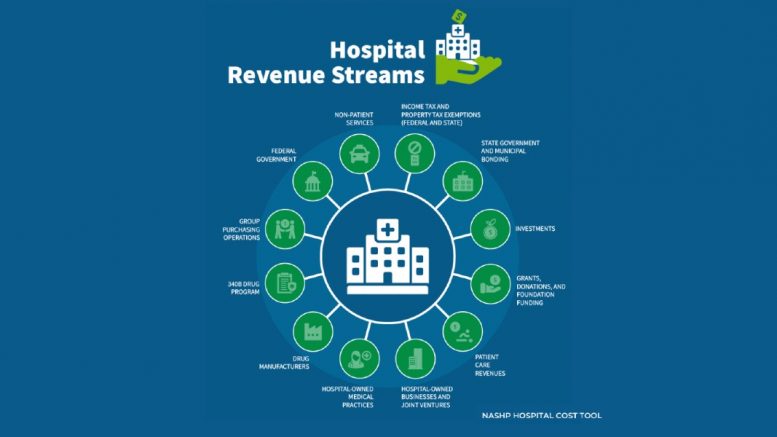Data will be critical to informing effective cost-containment policy options for states
Hospitals provide critical care for many consumers across the states. However, as health care spending continues to rise for consumers and payers—with the largest proportion of those expenditures on hospital services—states and other purchasers are seeking to better understand and address hospitals’ costs. Even with increased hospital transparency requirements, it is unclear how hospital prices relate to the expenses hospitals incur to provide services. The National Academy for State Health Policy (NASHP) in partnership with the Rice University Baker Institute for Public Policy and Mathematica Policy Research, with support from Arnold Ventures, has developed the Hospital Cost Tool (HCT) to help shed some light on this issue.
The HCT identifies different cost measures including hospital revenue, cost to charge ratios, and profitability across more than 4,600 hospitals nationwide from 2011 through 2019. It is interactive, allowing users to examine data for an individual hospital or specific health system, by state or users can compare data across hospitals and states. The tool is based on NASHP’s Hospital Cost Calculator that uses Medicare Cost Report data annually submitted to the federal government by hospitals. Data for 2020 will be added to the tool after more hospitals have completed their reports for that year.
“This new tool provides a view of publicly reported hospital data that isn’t otherwise available to policymakers and purchasers,” says Hemi Tewarson, NASHP’s Executive Director. “NASHP’s tool is an important resource for understanding costs of individual hospital and health systems—a critical first step to thoughtfully addressing rising health care costs.”
One notable metric within the HCT is hospitals’ breakeven point, which is the amount a commercial health plan would need to reimburse a hospital to cover its expenses. In calculating the breakeven, the tool accounts for a hospital’s operating costs, profit or loss from public coverage programs, charity care and uninsured patient hospital costs, Medicare disallowed costs, and a hospitals other income and expense. Purchasers of care, including states and employers, can compare the breakeven point to the data point showing what commercial payers pay. Depending on the hospital, the breakeven point and what commercial payers reimburse can be significantly different, indicating an opportunity to renegotiate payment rates.
“Understanding a hospitals’ breakeven point allows a purchaser like a state, an employer, or a health plan to negotiate a payment that offers an increase from the hospital’s costs rather than a discount from the hospital chargemaster, which is how most payment rate discussions start,” said Marilyn Bartlett, Senior Fellow at NASHP and former Administrator of the Montana State Employee Health Plan. Bartlett led the development of the HCT and conceptualized and used the breakeven calculations in Montana’s successful efforts to move its state employee plan to reference-based purchasing, saving millions of dollars.
Several employer purchasing coalitions have already begun using data from the HCT to help differentiate charges from costs to leverage the information in payment negotiations. A growing number of states are also using the data to develop strategies that address high costs in order to provide effective cost-containment policy options.
“Peak Health Alliance has used the NASHP hospital cost tool extensively and credits a good bit of the millions of dollars we have saved our members to the insight it provides. This tool helped us go from conceptually recognizing how important it is to understand a hospital’s finances to having practical hands-on knowledge that informs our negotiations and ensures a fair and reasonable agreement. It has really leveled the playing field between Peak and our hospitals,” said Claire V. S. Brockbank, Chief Executive Officer of Colorado’s Peak Alliance.
Jane Beyer, Senior Policy Advisor in the Office of the Washington Insurance Commissioner and the Chair of NASHP’s State Academy said, “Addressing rising health costs is necessary but is complicated and one-size does not fit all. States with urban centers and vast rural areas; with large health systems and small to mid-sized independent hospitals, need individualized hospital financial information to develop and implement data-driven policies. NASHP’s tool that allows examination of multiple variables by hospital bed size or of hospitals in one health system that cross multiple states, is critical to designing meaningful policies.”

